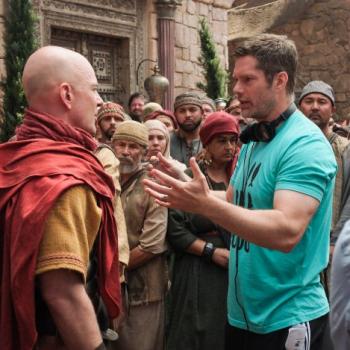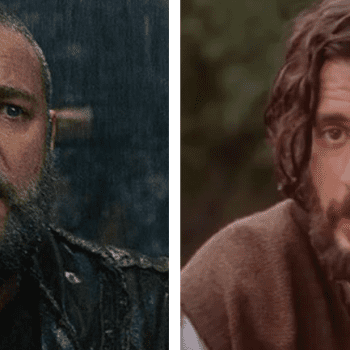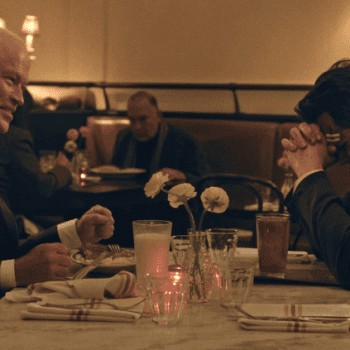
My review of Ice Age: The Meltdown is now up at CT Movies.
FWIW, I reviewed the original film for ChristianWeek four years ago, and since that review is not available online, I’ll reprint it below. I also rather like Mark Steyn’s review of the original film, which he re-posted on his website yesterday.
Also, click here for a brief analysis of the film that I whipped up as research for that essay on “anthropomorphic munchies” that I hope to get around to writing some day. (I talked about that a bit in my post on Madagascar last year.) Alas, there is little in the sequel that invites that sort of thematic exploration.
– – –
Ice Age — 3 stars out of 4
by Peter T. Chattaway
For animation fans, these are interesting times indeed. Disney’s grip on the genre has been slipping in the last few years, as audiences have turned away from the more traditional hand-drawn cartoons and have flocked to computer-animated films like Monsters, Inc. and the Toy Story movies, which Disney co-produced with John Lasseter‘s Pixar studio. Disney’s arch-rivals at DreamWorks scored a hit last year with Shrek, an enormously popular fairy-tale send-up, and other studios are getting in on the act, too. The biggest new contender is Blue Sky, the group that produced Ice Age, an amusing and surprisingly touching film about a group of prehistoric animals who try to get a human baby back to its tribe.
The animals who find the baby are Sid (voiced by John Leguizamo), a klutzy, motor-mouthed sloth who frequently bangs into things and tends to tick off the wrong animals, and Manfred (Ray Romano), a woolly mammoth who tries to get the little guy to leave him alone but doesn’t succeed. These two are joined by Diego (Denis Leary), a sarcastic sabre-toothed tiger who offers to guide them to the humans but who is actually planning to lead them into a trap. Along the way, they encounter a pair of amorous female sloths, a rodent whose efforts to hide his one big nut always end in disaster, and a flock of dodo birds whose idiocy dooms them to extinction (though in real life, dodos weren’t killed off until the 17th century).
It’s never easy to humanize animal characters when some of them happen to be carnivores; Diego quips that he won’t eat Sid because he doesn’t like junk food, but you can’t help wondering who he would eat, if we ever saw him grab a bite or two. Still, that caveat aside, the film does make some effective points about the need for forgiveness. Diego has been sent to get the baby because the leader of his pack wants revenge against the humans who have hunted their kind. But Manfred, we learn, has also suffered at the hands of humans, and we get a sense of how difficult it is for him to put aside his feelings of loss and help the baby. But he does anyway, and his positive example, plus his willingness to jeapordize his own life to save Diego’s, trigger something in the tiger’s conscience.
So long as this film is approached on the level of fable — like it or not, tigers do have to eat other animals to survive — there is, pardon the pun, some real meat here for parents and children to dig into.












